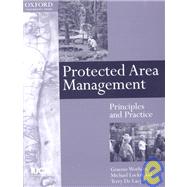
|
ix | ||||
|
xi | ||||
| Abbreviations for Australian jurisdictions and major protected area management agencies | xiii | ||||
| Related web sites | xiv | ||||
| Acknowledgments | xv | ||||
| Introduction | xxi | ||||
| A day in the life of a ranger | xxv | ||||
| Part A Setting the Context | 1 | (96) | |||
|
2 | (25) | |||
|
3 | (6) | |||
|
9 | (1) | |||
|
10 | (2) | |||
|
12 | (3) | |||
|
15 | (2) | |||
|
17 | (3) | |||
|
20 | (6) | |||
|
26 | (1) | |||
|
27 | (25) | |||
|
28 | (9) | |||
|
37 | (1) | |||
|
38 | (1) | |||
|
39 | (1) | |||
|
40 | (3) | |||
|
43 | (3) | |||
|
46 | (6) | |||
|
52 | (28) | |||
|
54 | (3) | |||
|
57 | (4) | |||
|
61 | (2) | |||
|
63 | (5) | |||
|
68 | (12) | |||
|
80 | (17) | |||
|
81 | (1) | |||
|
82 | (3) | |||
|
85 | (6) | |||
|
91 | (2) | |||
|
93 | (1) | |||
|
94 | (3) | |||
| Part B Principles and Practice | 97 | (262) | |||
|
98 | (16) | |||
|
100 | (3) | |||
|
103 | (1) | |||
|
103 | (3) | |||
|
106 | (3) | |||
|
109 | (4) | |||
|
113 | (1) | |||
|
114 | (26) | |||
|
115 | (1) | |||
|
116 | (4) | |||
|
120 | (1) | |||
|
121 | (6) | |||
|
127 | (11) | |||
|
138 | (1) | |||
|
138 | (2) | |||
|
140 | (16) | |||
|
141 | (5) | |||
|
146 | (1) | |||
|
147 | (4) | |||
|
151 | (1) | |||
|
152 | (2) | |||
|
154 | (1) | |||
|
154 | (2) | |||
|
156 | (22) | |||
|
157 | (1) | |||
|
158 | (2) | |||
|
160 | (2) | |||
|
162 | (8) | |||
|
170 | (7) | |||
|
177 | (1) | |||
|
178 | (32) | |||
|
179 | (3) | |||
|
182 | (11) | |||
|
193 | (3) | |||
|
196 | (1) | |||
|
196 | (3) | |||
|
199 | (6) | |||
|
205 | (1) | |||
|
206 | (3) | |||
|
209 | (1) | |||
|
210 | (18) | |||
|
211 | (2) | |||
|
213 | (3) | |||
|
216 | (4) | |||
|
220 | (4) | |||
|
224 | (2) | |||
|
226 | (2) | |||
|
228 | (22) | |||
|
229 | (7) | |||
|
236 | (3) | |||
|
239 | (5) | |||
|
244 | (5) | |||
|
249 | (1) | |||
|
250 | (21) | |||
|
251 | (1) | |||
|
252 | (7) | |||
|
259 | (5) | |||
|
264 | (3) | |||
|
267 | (3) | |||
|
270 | (1) | |||
|
271 | (29) | |||
|
272 | (5) | |||
|
277 | (6) | |||
|
283 | (3) | |||
|
286 | (10) | |||
|
296 | (3) | |||
|
299 | (1) | |||
|
300 | (21) | |||
|
301 | (3) | |||
|
304 | (4) | |||
|
308 | (5) | |||
|
313 | (7) | |||
|
320 | (1) | |||
|
321 | (14) | |||
|
322 | (1) | |||
|
323 | (3) | |||
|
326 | (1) | |||
|
327 | (3) | |||
|
330 | (4) | |||
|
334 | (1) | |||
|
335 | (18) | |||
|
337 | (2) | |||
|
339 | (2) | |||
|
341 | (4) | |||
|
345 | (1) | |||
|
346 | (5) | |||
|
351 | (2) | |||
|
353 | (6) | |||
| Appendix---Summary of Information on Australia's Protected Areas | 359 | (17) | |||
|
361 | (1) | |||
|
362 | (1) | |||
|
363 | (1) | |||
|
364 | (2) | |||
|
366 | (2) | |||
|
368 | (2) | |||
|
370 | (1) | |||
|
371 | (1) | |||
|
372 | (2) | |||
|
374 | (2) | |||
| References | 376 | (15) | |||
| Index | 391 |
The New copy of this book will include any supplemental materials advertised. Please check the title of the book to determine if it should include any access cards, study guides, lab manuals, CDs, etc.
The Used, Rental and eBook copies of this book are not guaranteed to include any supplemental materials. Typically, only the book itself is included. This is true even if the title states it includes any access cards, study guides, lab manuals, CDs, etc.